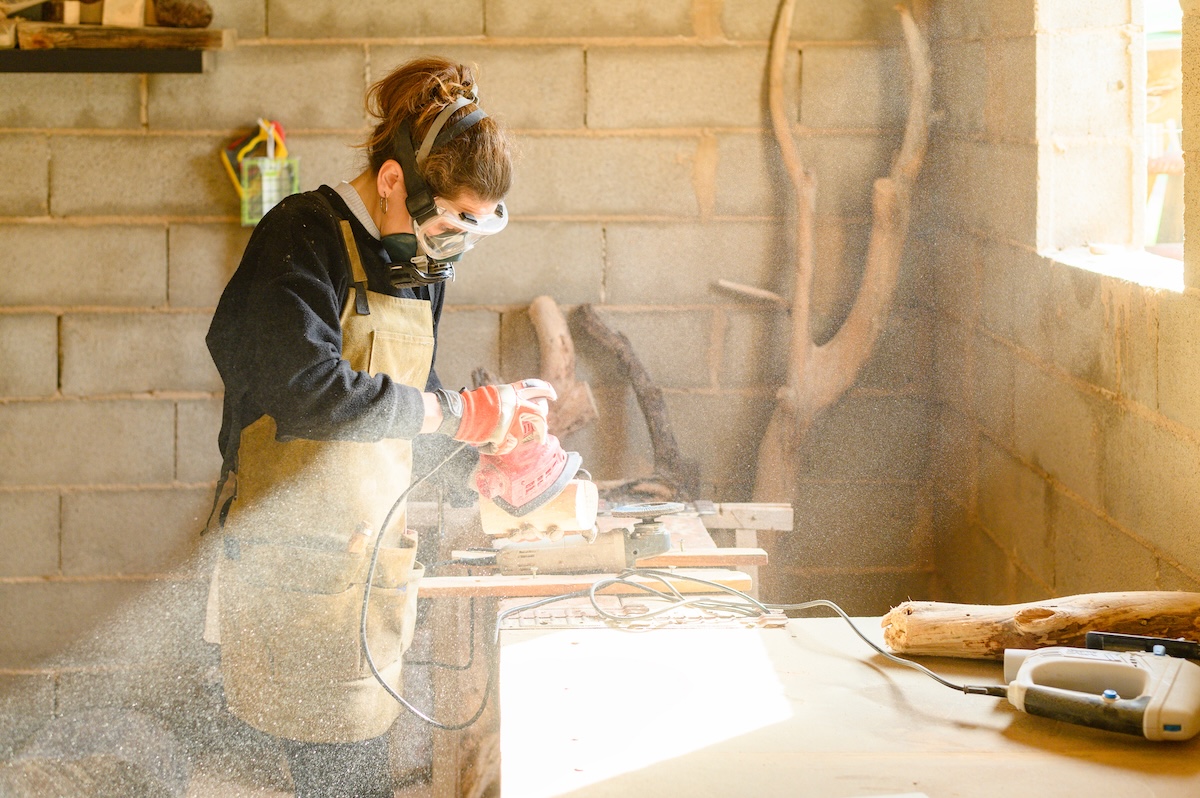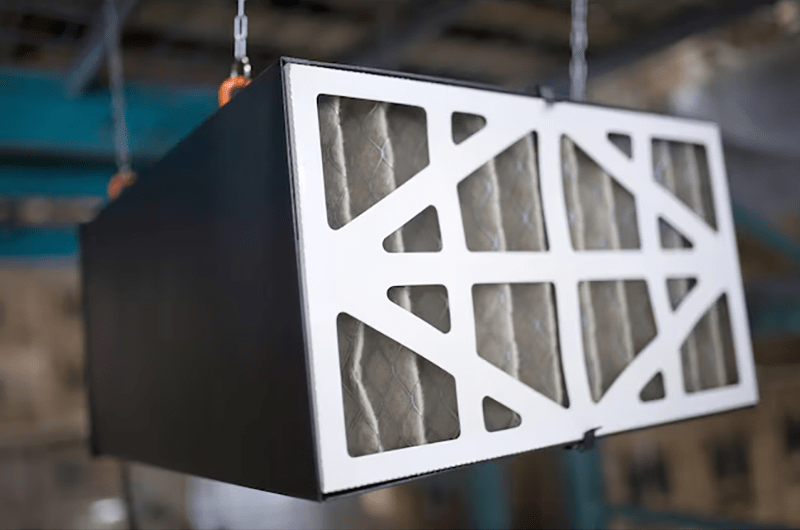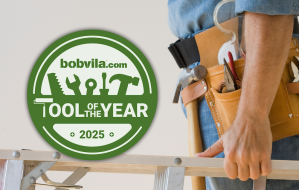

We may earn revenue from the products available on this page and participate in affiliate programs. Learn More ›
After getting yelled at by my wife for tracking sawdust into the house yet again, I decided to rethink my dust-collection strategies for my fairly tiny garage shop. But a cleaner home was only one part of the reason.
More importantly, I decided a cleaner workshop was better for my health. I grew up thinking being covered with sawdust after a day of working was a badge of honor. But after doing a little research, I realized that sawdust was a lot more dangerous than I thought for the majority of my life. Here is what I’ve learned about smart workshop dust collection.
The Health Risks of Sawdust
Woodworkers talk a lot about tool safety, but there may be an aspect a lot of us are overlooking: dust particles. According to the Occupational Safety and Health Administration, breathing in sawdust “may cause allergic respiratory symptoms, mucosal and non-allergic respiratory symptoms, and cancer,” as well as frequent headaches and prolonged colds. Wood treated with arsenic, creosote, copper, or other chemicals present additional health risks as well. Norm Abrams, of This Old House and New Yankee Workshop fame, had to get his sinuses rebuilt years ago due to sawdust exposure.
According to research, large dust particles are typically filtered out through the body’s natural defenses. Smaller particles, think the width of a human hair and smaller, can actually be much more dangerous.These particles are tiny, can penetrate deep into your lungs and even your bloodstream, potentially making it into various organs.
OSHA established a limit of breathing in 5 mg/m³ for softwood dust and 1 mg/m³ for hardwood dust over an 8-hour workday; in layman’s terms, that means five tiny pinches of softwood dust and one tiny pinch of hardwood dust. I know I inhaled more than that amount just sanding one of the seven whiskey boxes I made for friends recently.

Dust Collectors vs. Dust Extractors
My first thought was to get a large standing dust collector, like this Central Machinery high-capacity dust collector from Harbor Freight. But in the end, I decided it would be overkill, given my needs and my shop’s size. Dust collectors are terrific for collecting large amounts of debris from tools like miter and table saws, but don’t always do such a great job of filtering the smaller particles that cause most health problems. A shop-vac can do many of these same tasks, perhaps just not quite as well.
Dust extractors, on the other hand, are designed primarily to work with sanders and other tools that don’t kick out as much large debris. They use high-powered suction to capture the smaller debris being thrown out, collecting it at the source.
Choosing an Air Filtration System
I’d been using a 9-gallon Bauer vacuum with a dust cyclone as my primary dust collector for years before I decided a change was in order. It does a fairly good job, collecting the larger debris from my miter and table saws, even if there were still some smaller particles floating in the air during and after their use. In lieu of buying a dedicated dust collector, I still use it for those tools that generate a lot of sawdust.
To capture the smaller particles, I bought a ceiling-mounted air purifier. Several manufacturers offer these devices, and I decided on the budget brand Wen, which promised to capture particles as small as one micron. And while I can’t vouch that it does that kind of precise work, I have seen the filters before and after a day of using different tools in the shop. It also does a great job of sucking in airborne debris.
In addition, I’d try to time my breaks just after using the table saw, to give the filtration system a few minutes to better clean the air. I remember one day looking at a newly gray filter and thinking, “A lot of this could have been in my lungs right now.” The Wen has three speeds and a timer that shuts off after several hours of purifying the air.
Our Recommendation: WEN 3410 3-Speed Remote-Controlled Air Filtration System at Lowe’s for $139.94

Choosing a Dust Extractor and Sander
For close to two decades, I relied on a 20V random orbital sander with a dust bag. Even attempting to use it with my shop vac, it still kicked out a lot of that fine dust that causes the worst health problems. I’d just started wearing a filter mask while sanding to protect my lungs when I decided to make an upgrade.
After a lot of research, I picked the Festool CT 15 E HEPA dust extractor and the Festool ETS EC 125 5-inch random orbital sander. The filter bag for the dust extractor is only 3.96 gallons, so it can fill up quickly if you’re trying to use it to capture table saw debris, but for jobs that emit smaller particles, I have found that it’s perfect. All Festool tools are designed with dust extraction as a major consideration, and these two devices work seamlessly with one another.
Rick Bush, product marketing manager at Festool, said the sander’s design “ensures airflow through and over the pad surface. Extraction is applied to perimeter holes, where most of the work is done, and it then draws the air across the pad from the center hole which is channeled through the pad to the outer perimeter causing a highly-effective circular effect to draw in the dust as it is being produced.”
I needed to sand the butcher-block countertop on our kitchen island a few weeks ago, going from 120 grit to 600, and I didn’t notice any floating particles hanging in the air or on the island afterward. Just as importantly, the sanded butcher block was smoother than glass. Other projects I sanded before finishing were similarly particle-free.
Our Recommendations: Festool CT 15 E HEPA dust extractor at Rockler for $444.14 and ETS EC 125 5-inch random orbital sander at Rockler for $539.54
Final Thoughts
In the months since I’ve adopted this new philosophy of dust-free air, my garage is cleaner, I haven’t been hacking up anything after working in the shop, and my wife is happier (at least as much as she can be married to me). I’m going to continue to tinker with the setup, but so far it seems to be a success.
